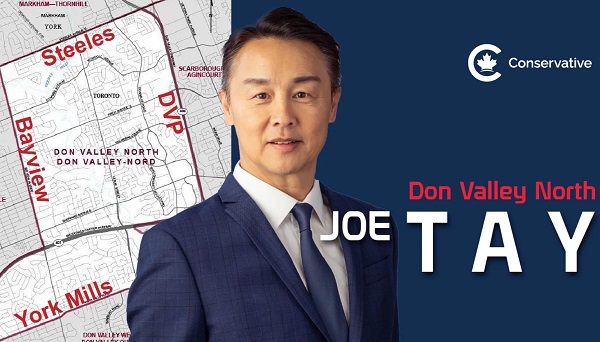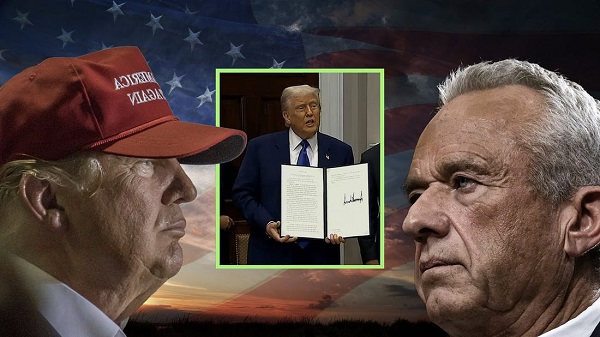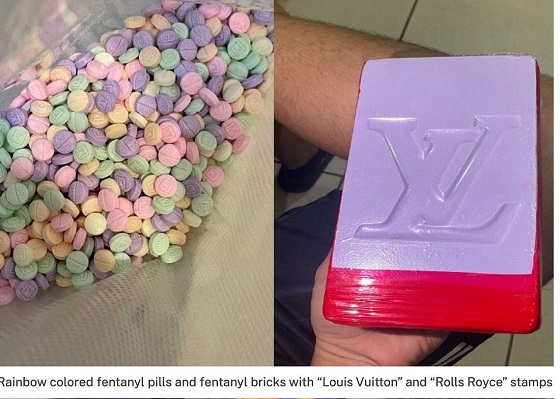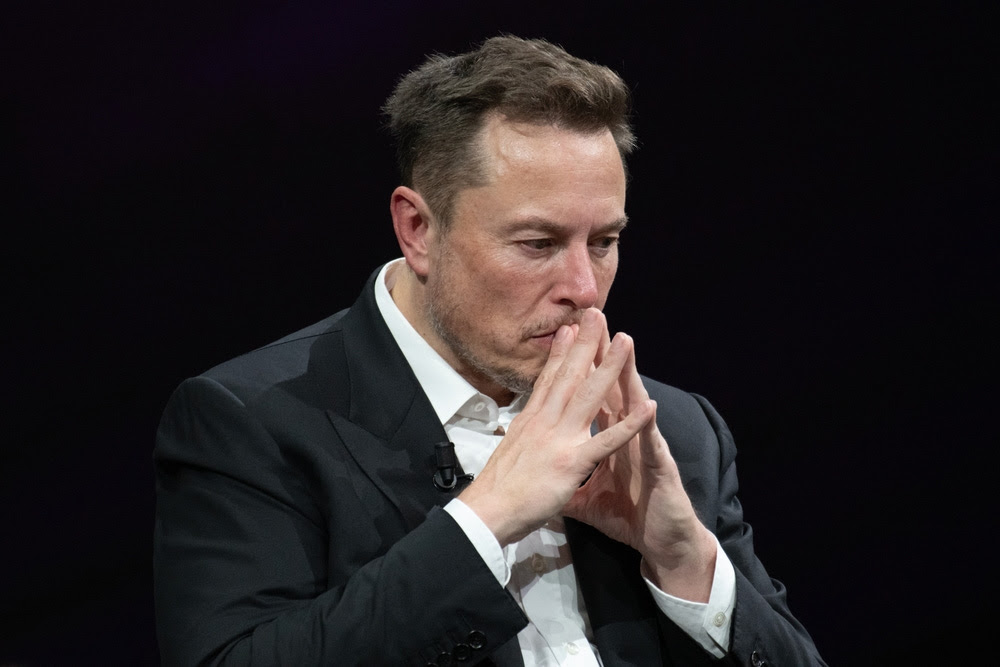Business
Tennessee sues BlackRock for deceiving consumers on using ESG to invest their money
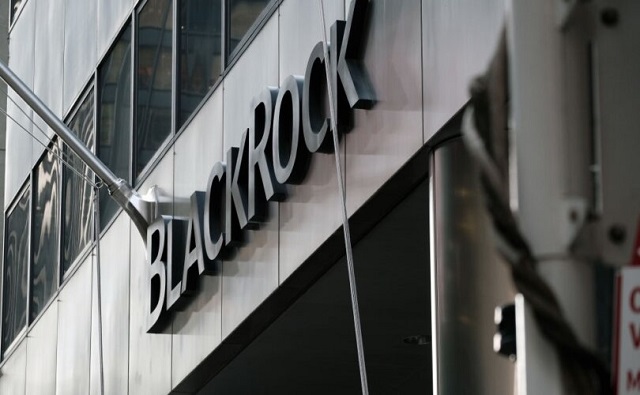
From LifeSiteNews
‘Tennessee consumers deserve to know which of BlackRock’s statements are a true account of the company’s decision-making.’
Tennessee has filed a consumer protection lawsuit against far-left asset management giant BlackRock, Inc. over misrepresenting the extent to which so-called “environmental, social, and governance” (ESG) standards influenced investment decisions, in the first lawsuit of its kind.
“We allege that BlackRock’s inconsistent statements about its investment strategies deprived consumers of the ability to make an informed choice,” Tennessee Attorney General Jonathan Skrmetti said in a press release. “Some public statements show a company that focuses exclusively on return on investment, others show a company that gives special consideration to environmental factors. Ultimately, I want to make certain that corporations, no matter their size, treat Tennessee consumers fairly and honestly.”
ESG is essentially a scoring system that incentivizes investing in companies not on the basis of their performance for customers and shareholders, but rather on their fealty to so-called “social justice” principles such as diversity and environmentalism. It is one of the reasons why so many companies in recent years have attempted to influence public policy on issues such as homosexuality, transgenderism, race relations, and abortion.
Tennessee officials maintain that BlackRock, which manages more than $9 trillion worth of investments, has given conflicting answers as to the degree of influence ESG holds over its shareholder voting power. The firm is part of environmental coalitions Net Zero Asset Managers Initiative and Climate Action 100+, both of which require members to commit to various climate-related policy goals, including achieving “net zero” carbon emissions by 2050.
“Yet BlackRock’s disclosures do not mention such promises,” the Attorney General’s office notes. “In fact, BlackRock has told consumers elsewhere that the only consideration driving its investment decisions is return on investment […] Tennessee consumers deserve to know which of BlackRock’s statements are a true account of the company’s decision-making. This enforcement action seeks injunctive relief, civil penalties, and recoupment of the State’s costs.”
Nineteen states – Alabama, Alaska, Arkansas, Florida, Georgia, Idaho, Iowa, Mississippi, Missouri, Montana, Nebraska, New Hampshire, North Dakota, Oklahoma, South Dakota, Tennessee, Utah, West Virginia, and Wyoming – have formed a coalition led by Florida governor and 2024 presidential candidate Ron DeSantis to collectively agree to resist ESG standards in a variety of ways, such as banning their use in state pension-fund investment decisions, banning the use of “social credit scores” in banking and lending practices, and banning ideological discrimination against customers by financial institutions.
Business
Carney’s cabinet likely means more of the same on energy and climate
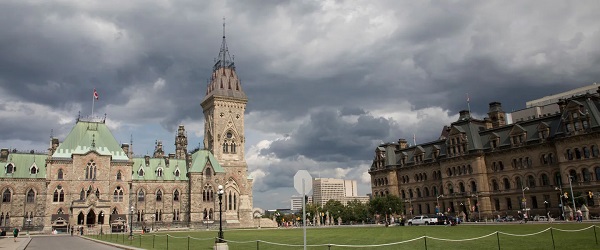
From the Fraser Institute
Prime Minister Carney recently unveiled his new cabinet, and he made some changes in some key policy areas including Energy and Natural Resources, Environment and Climate Change, and Transport and Internal Trade. What do these cabinet picks tell us about the potential policy focus of Carney’s government moving forward?
At the helm of the Energy and Natural Resource portfolio, Carney appointed Timothy Hodgson, a former banker and chair of Ontario’s massive Hydro One electricity utility. A quick search of Hodgson’s previous experience and opinions on matters of energy and natural resource policy comes up rather dry—he is something of a cypher. Acquaintances are quoted in several articles suggesting he has a pragmatic, pro-business orientation, but that is about all we can glean.
Still, what we do know is that Hodgson is replacing Jonathan Wilkinson, previously a supporter of highly aggressive greenhouse gas emission reductions, and aggressive regulation in the energy and natural resource policy spaces when part of Trudeau’s cabinet. So, with a mostly blank slate to stand on, and an ostensibly pragmatic “banker” mentality, we can expect (hope?) that Minister Hodgson blazes a less extreme path forward on energy and natural resource issues, balancing in a more even-handed fashion protection of the environment and natural resources with Canada’s need for economic productivity.
Hodgson’s partner on the energy, natural resource environmental policy front will be Julie Dabrusin, new Minister of Environment and Climate Change, replacing Uber-environmentalist Steven Guilbeault. Dabrusin was previously Secretary to the Minister of Environment and Climate Change, and Secretary to the Minister of Natural Resources in the Trudeau government. The most logical expectation would be to expect she will continue to champion Trudeau-esque policies, tempering any hopes we might have for the potentially more moderate Minister Hodgson as bellwether of Canada’s energy, natural resource and environmental policies.
Finally, Carney appointed Chrystia Freeland as Minister of Transport and Internal Trade. Freeland is a strong believer in the climate crisis, an intense regulator thereof, and seems to believe that transportation must be electrified, pedalized and mass-transificated (okay, I made that last term up) to save the planet. So, anyone hoping for a move away from the green-transportation agenda, away from an all electric-car, mass-transit oriented future, and back to something favouring (or at least not-demonizing) an automobile-centric lifestyle might want to rein in their expectations.
Unfortunately, in Carney’s cavalcade of cabinet officials, he did not create a new Minister of Regulatory Reform and Right-Sizing (again, my term). One of Canada’s biggest public policy illnesses is its plague of regulations. Canada is drowning under a mountain of regulatory red-tape and badly needs a minister with scissors. Canada wants no part of a U.S.-style Department of Government Efficiency (DOGE), but a Minister of Regulatory Reform and Right-Sizing, akin to what British Columbia had briefly in 2001, would be a policy tonic Canada needs badly.
Little is known about exactly where the bulk of Prime Minister Carney’s new cabinet will take us, but the safe betting—in areas of environment, natural resources, climate change and transportation—is that we’re likely to see a continuance of Trudeau-era policies, though promulgated by somewhat more bland less-obviously-zealous eco-warriors. Time will tell.
Business
The Oracle of Omaha Calls it a Career
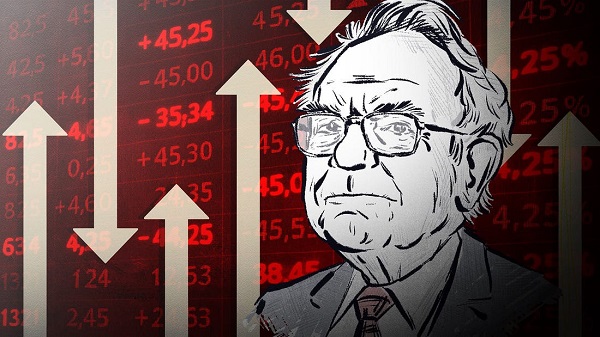
By Eric Salzman
Sometimes even the great ones need to get by with a little help from their friends
Warren Buffett announced this month that he will retire from his position as CEO of Berkshire Hathaway, the fabled corporate conglomerate that made him a revered household name, at the end of 2025. Along with a mostly stellar seven–decade investment career, he carefully created an image of a down to earth midwesterner who lives in a modest home, drives a modest car and dines on Dairy Queen (he liked DQ so much he bought the company in 1997) while swigging Coca Cola (another great Berkshire investment) and dispensing sage advise the way your favorite uncle might.
I have a six degrees of separation story where I sort of crossed paths with him. In fact, I can say that I played a small part in Buffett’s dumping of one of his favorite and most profitable trades, Freddie Mac.
Racket News is supported by readers. Consider becoming a free or paid subscriber.
Up until 2000, Warren Buffett’s Berkshire Hathaway owned a big piece of Freddie Mac (he first purchased Freddie stock in 1988), and it was one of Berkshire’s top performers. Buffett has always loved insurance companies, especially ones that generate lots of float (getting cash that you may or may not have to pay out later). That is what Freddie Mac, along with its “rival” Fannie Mae, had in spades. The government-sponsored enterprises had a duopoly on insuring the credit on trillions of American single and multi-family mortgages.
The events that caused Buffett to sell his entire stake in Freddie Mac took place in 1999, right about the time that I arrived at Freddie Mac as the risk manager of one of its divisions.
In February 1999 I was called into a meeting, a top-secret one! Freddie Mac had been sore forever that it was never able to catch up to its big sister Fannie Mae and get a 50% share of the mortgage insurance business. The split always toggled between 55-45 and 60-40 in Fannie’s favor. Freddie had tried many different schemes to achieve parity, and all had failed. Now it was time to go with the nuclear option, kind of like when the Soviet Union put nukes in Cuba.
Freddie made a deal with mortgage giant Wells Fargo. The bank agreed to let Freddie securitize all Wells Fargo loans for two years.
Freddie was confident the deal would allow it to catch up to Fannie Mae. Freddie was also confident that Fannie Mae would just passively accept it.
My small role in this scheme was to approve a massive new three-month credit risk line for Wells. Honestly, the risk that Wells Fargo would go belly up with no warning in any three-month period wasn’t really an issue, so I said sure and signed off.
In the eyes of Freddie, it was a great deal for both sides. Freddie would capture the elusive market share it desired and Wells would be able to insure loans at a cheaper rate, which meant higher profits.
Freddie also made deals with other banks. Wells got the biggest discount, but all were paying less than they were before to insure loans.
Unfortunately, within about a week, Fannie burst Freddie’s parity fantasy by signing up giants like Countrywide, also for much lower insurance rates, and with that, the race to the bottom of mortgage credit insurance was on! Actually, I would say that this was the first event in what would eventually become the Financial Crisis of 2008.
Warren Buffett took one look at this insanity of a duopoly engaging in a bitter price war and sold his entire stake in Freddie Mac. Interestingly, Berkshire was also a big investor in Wells Fargo, so Buffett got to see both sides of this strategy and chose correctly to go with the recipient of Freddie’s largesse, Wells.
However, my man-crush on Buffett ended in 2008.
One additional trait that many found endearing in Buffett was he could be very candid about his occasional losses and mistakes. He would often use these instances to impart some really great advice. However, the one thing I never heard him discuss was the times he should have lost but got the kind of help regular folks don’t get.
Buffett’s long-time business partner, Charlie Munger, once said “Suck it in and cope, buddy” in response to complaints that the government did more to help Wall Street than homeowners during the 2000’s housing crisis.
The truth is, Buffett, Munger and Berkshire would have had to do a lot of sucking themselves if not for the massive government bailout of the financial system in 2008.
This part of the story started between 2003 and 2004. Berkshire made huge option bets that four major global stock indices — the S&P 500, the Nikkei 225, the Euro Stoxx 50 and the FTSE 100 — would not end up lower than they were at the time of the trade, 10 or 15 years in the future. Berkshire sold these options to major Wall Street banks and in return, the banks paid Berkshire approximately $4.9 billion in what are called premiums. If the stock indices ended lower than their current levels, Berkshire would pay the banks the difference and, if necessary, more than the $4.9 billion it was paid.
In turn, if the indices ended at or higher than current levels, Berkshire would get to keep all the money.
Normally, companies that sell these types of long-term options have to put up collateral. Berkshire did not. With Buffet at the helm, Berkshire was considered riskless. This was the key to the strategy. Berkshire could use the $4.9 billion however it wanted without having to tie up any of Berkshire’s other assets.
As long as nothing went horribly wrong, this was a genius move. Buffett would just do his usual brilliant investing with the funds and even if the stock indices ended somewhat lower when the deals expired a decade or two later, the money he would have to pay on the options would probably pale in comparison to the money he would have made with those billions in premiums he received.
Again, unless something went horribly wrong.
In 2008, global equity markets finally woke up to the fact that the subprime mortgage crisis was a giant asteroid hurtling straight for the global financial system and began to free-fall.
At first it appeared Buffett saw what was happening as a great opportunity. One of his famous folksy quotes after all was:
“A simple rule dictates my buying: Be fearful when others are greedy, and be greedy when others are fearful.”
In September of 2008, with Goldman Sachs taking on water with the rest of their Wall Street brethren, Berkshire invested $5 billion in perpetual preferred stock with Goldman. Berkshire would receive a 10% dividend as well as the right to buy $5 billion of common stock at $115 with a five-year term. On the day of the purchase, September 23, 2008, Goldman’s stock was at $125.05. Perhaps Buffett believed Goldman was already saved after AIG was bailed out the previous week. As long as Goldman survived, this could be one of the best returns Berkshire ever made.
However, despite the immediate bailout measures taken to save Goldman and the rest, the hits just kept coming with big banks like Citigroup, Bank of America, Wachovia and WaMu (which went into receivership two days later) on the ropes.
On October 10, 2008, Goldman Sachs’ stock closed at $88.80, down 29% from where Buffett made his Goldman investment just two weeks prior. Moreover, those options Berkshire sold on the four global stock indices, made a few years earlier were going against Berkshire as global stocks cratered.
Everyone needed a bailout, including Berkshire.
Interestingly, a few years after the crisis, CNBC wrote a piece, replete with the customary Andrew Sorkin boot-licking interview.
In October 2008, in the midst of the financial crisis, Berkshire Hathaway CEO Warren Buffett made a late-night phone call to then-Treasury Secretary Henry “Hank” Paulson, with an idea about how the government might be able to turn the economy around.
Paulson was asleep. He’d had a busy night working through various policy ideas with his team to restore confidence in Wall Street.
At the time, Congress had just passed the Emergency Economic Stabilization Act, or the “bailout bill” as it came to be known, and created a $700 billion Troubled Assets Relief Program to purchase assets of failing banks. But these actions were not enough to calm investors
Once he understood what was going on, Paulson says, he listened as Buffett “laid out an idea which was a germ of what we did.”
What he told Paulson, Buffett recalls, is that, “It might make more sense to put more capital in the banks than it would to try and buy these assets.”
Perhaps the CNBC piece should have been called How Warren Buffett Saved Himself During the Financial Crisis.
Remember, just a few weeks before Buffett’s phone call to Paulson, Buffett had put capital into Goldman and now he was losing his ass. The government putting capital into Goldman and the rest of the major banks, at the time, would save him.
Naturally, in a government bailout led by a former CEO of Goldman Sachs, Hank Paulson, the U.S. never exacted the price it should have for saving Goldman and the rest of the major Wall Street banks. In a fair world, the government bailout would have come with major strings attached.
Instead the government, aided by the Federal Reserve, saved the likes of Goldman and Morgan Stanley by giving them federal bank charters, life-saving capital and bailing out AIG. The bailout recipients then profited handsomely in the aftermath due to the Federal Reserve’s unprecedented emergency policies such as zero interest rate policy and the massive buying of U.S. Treasury securities and agency mortgage-backed securities, which the Federal Reserve kept until 2018.
Those bailed out then thanked the government for saving them by giving them back their capital. Incredibly, a Goldman Sachs story on its website says “…the firm had neither sought nor expected such an infusion of capital from the Treasury.” If you need further proof of how laughable this statement is, check out this email from a Federal Reserve Bank of New York official one day before Goldman was given a bank charter.
Berkshire’s large bets on Goldman and the four major global equity indices were also saved and they also ended up richer after the crisis than before.
Meanwhile, the average American was left to “suck it in,” cope and reflect on how greedy and silly they had been buying homes they couldn’t afford.
Warren Buffett was a brilliant investor and a very wise and interesting man. However, in 2008 the “Oracle of Omaha” moniker did not fit. He was just another guy who didn’t quite see just how big the bomb cyclone was that was coming right at him. He and Berkshire escaped financial ruin like all the other plutocrats by relying on Uncle Sam to come to their rescue.
Racket News is a reader-supported publication. Consider becoming a free or paid subscriber.
-

 International1 day ago
International1 day agoPope Leo XIV meets with JD Vance, Marco Rubio following pontiff’s opening Mass
-
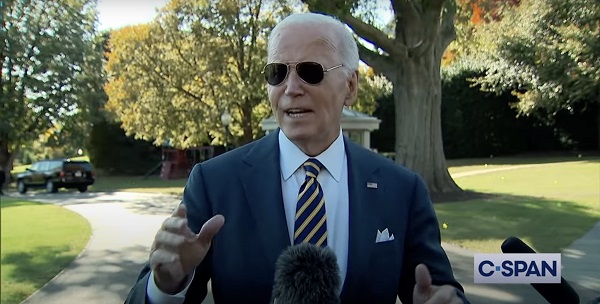
 Daily Caller2 days ago
Daily Caller2 days agoJoe Biden Diagnosed With ‘Aggressive’ Prostate Cancer
-

 Energy2 days ago
Energy2 days agoUS expanding pro-energy initiatives, reversing Biden policies
-

 Automotive2 days ago
Automotive2 days agoCanada’s electric vehicle industry faces multiple threats
-
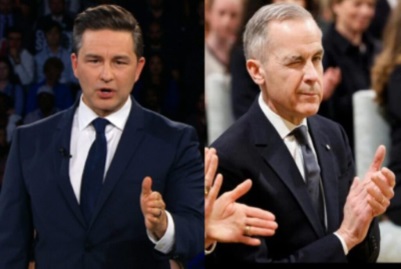
 2025 Federal Election24 hours ago
2025 Federal Election24 hours agoLiberals edge closer to majority as judicial recount flips another Ontario seat
-

 Alberta15 hours ago
Alberta15 hours agoCanmore attempting to tax its way out of housing crisis
-

 Business15 hours ago
Business15 hours agoThe Oracle of Omaha Calls it a Career
-

 Health10 hours ago
Health10 hours agoWHO assembly adopts ‘pandemic agreement’ binding countries to unified response



